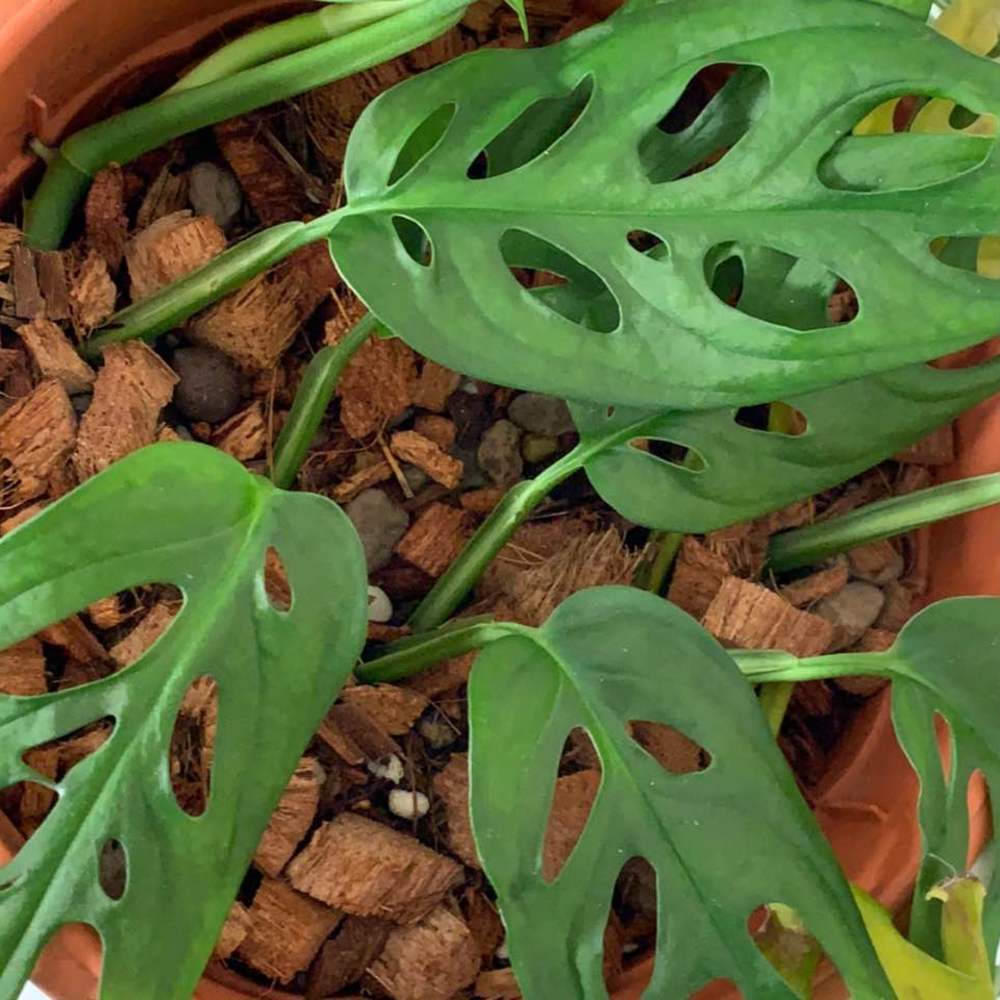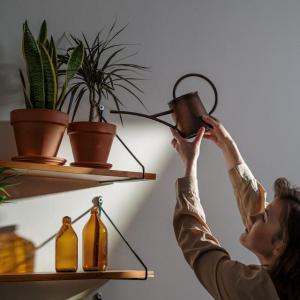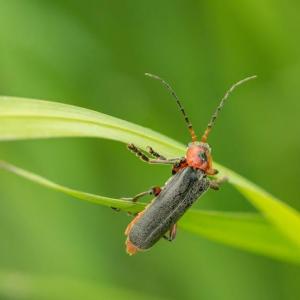Plant Experience
Detail
The Swiss cheese plant, Monstera adansonii, gets its name from its large, heart-shaped leaves, which as it ages, become covered with holes that resemble Swiss cheese. The houseplant, which is part of the Araceae family that's native to South and Central America, is easy to grow and loves to climb. If you give it a stake or trellis to grow upward, you'll enjoy larger leaves with those unique holes.
This "Swiss cheese plant" is an excellent example of why using common names with plants can be confusing. Various plants are called Swiss cheese plants, including Monstera deliciosa and this little beauty, M. adansonii.
How to Grow Monstera Adansonii
The Swiss cheese vine is a tropical ornamental that has aerial roots growing downwards from the stem. These roots easily reach the ground, giving this plant a vine-like tendency. These climbers have striking, perforated deeply green leaves that will make you the envy of any plant collector worth their sphagnum peat.
Light
Monster adansonii are native to the jungles of Central and South America, so they grow in the wild under the coverage of trees. Therefore, the plants grow best in indirect sunlight. If it's in a spot with direct light, limit it to just 2 to 3 hours of morning sun.
Soil
This plant grows best in peat-based potting soil that has a large drainage hole. The peat helps to trap moisture in the soil without allowing it to become waterlogged. For strong growth, aim for a soil pH of 5.5 to 7.0.
Water
Before you water a Swiss cheese vine, do the knuckle test—stick your finger up to the knuckle into the soil to see how wet or dry the soil is. If the soil is nearly dry, water it. Don't let the soil dry out entirely.
Temperature and Humidity
M. adansonii is best grown in a conservatory or greenhouse where humidity, temperature, and light are all maximized. These are deep-jungle plants that thrive on very high humidity, lots of moisture during the rainy season, and high temps. Adult plants are also climbers, so they can be aggressive if grown correctly. The closer you can mimic the plant's natural conditions the better—choose well-lit, warm and humid bathrooms or kitchens or mist plants frequently. You could also place a humidifier near the plant to keep the air moist.
Fertilizer
Once you've potted or repotted the plant, don't fertilize within four to six months if you're using a general houseplant potting soil. These soils have slow-release fertilizer already mixed in. From there, fertilize when you water during the summer and spring months, then refrain from feeding during the fall and winter months.
Potting and Repotting
In nature, M. adansonii are climbers, scooting up rainforest trees into the canopy and enlarging as they grow. Most growers, however, use them as trailers or hanging plants, which necessitates less frequent repotting. Repot every other year as needed, and refresh potting soil annually. Failure to keep them in nutritious soil will hurt these plants.
This "Swiss cheese plant" is an excellent example of why using common names with plants can be confusing. Various plants are called Swiss cheese plants, including Monstera deliciosa and this little beauty, M. adansonii.
How to Grow Monstera Adansonii
The Swiss cheese vine is a tropical ornamental that has aerial roots growing downwards from the stem. These roots easily reach the ground, giving this plant a vine-like tendency. These climbers have striking, perforated deeply green leaves that will make you the envy of any plant collector worth their sphagnum peat.
Light
Monster adansonii are native to the jungles of Central and South America, so they grow in the wild under the coverage of trees. Therefore, the plants grow best in indirect sunlight. If it's in a spot with direct light, limit it to just 2 to 3 hours of morning sun.
Soil
This plant grows best in peat-based potting soil that has a large drainage hole. The peat helps to trap moisture in the soil without allowing it to become waterlogged. For strong growth, aim for a soil pH of 5.5 to 7.0.
Water
Before you water a Swiss cheese vine, do the knuckle test—stick your finger up to the knuckle into the soil to see how wet or dry the soil is. If the soil is nearly dry, water it. Don't let the soil dry out entirely.
Temperature and Humidity
M. adansonii is best grown in a conservatory or greenhouse where humidity, temperature, and light are all maximized. These are deep-jungle plants that thrive on very high humidity, lots of moisture during the rainy season, and high temps. Adult plants are also climbers, so they can be aggressive if grown correctly. The closer you can mimic the plant's natural conditions the better—choose well-lit, warm and humid bathrooms or kitchens or mist plants frequently. You could also place a humidifier near the plant to keep the air moist.
Fertilizer
Once you've potted or repotted the plant, don't fertilize within four to six months if you're using a general houseplant potting soil. These soils have slow-release fertilizer already mixed in. From there, fertilize when you water during the summer and spring months, then refrain from feeding during the fall and winter months.
Potting and Repotting
In nature, M. adansonii are climbers, scooting up rainforest trees into the canopy and enlarging as they grow. Most growers, however, use them as trailers or hanging plants, which necessitates less frequent repotting. Repot every other year as needed, and refresh potting soil annually. Failure to keep them in nutritious soil will hurt these plants.
Album (2)
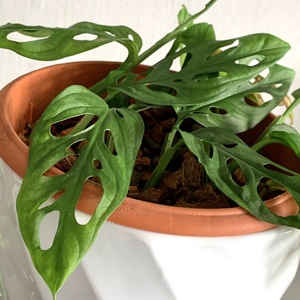
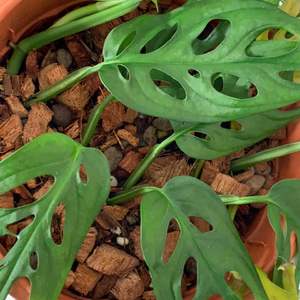
kensong
2019-08-13

This is my first growing diary. From Mona.




Elite Article


